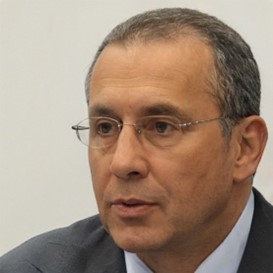Now Reading: From Stride to Strength: Overcoming Spinal Cord Injury
-
01
From Stride to Strength: Overcoming Spinal Cord Injury

From Stride to Strength: Overcoming Spinal Cord Injury
A spinal cord injury (SCI) can be a life-changing event, impacting a person’s mobility, independence, and overall quality of life. However, with determination, support, and the right resources, individuals with SCI can overcome challenges and embark on a journey from stride to strength. This article explores the various aspects of spinal cord injuries, from their causes and classifications to the rehabilitation process and legal considerations, with the assistance of a spinal cord injury attorney.
Understanding Spinal Cord Injury
The spinal cord serves as a vital pathway for communication between the brain and the rest of the body. When it sustains damage due to trauma, accidents, falls, or diseases like tumors or infections, it can lead to a spinal cord injury. These injuries are broadly classified into two categories: complete and incomplete. In a complete SCI, the affected person loses all sensory and motor functions below the injury site, while in an incomplete SCI, some degree of sensory and motor function may be retained.
The location of the spinal cord injury on the vertebral column also determines the extent of impairment. Injuries to the cervical region (neck) typically result in quadriplegia, affecting both the upper and lower extremities, while injuries to the thoracic or lumbar region may lead to paraplegia, affecting the lower limbs.
The Rehabilitation Journey
Rehabilitation plays a crucial role in helping individuals with spinal cord injuries adapt, regain independence, and enhance their overall well-being. The rehabilitation process is multifaceted and involves various healthcare professionals, including physiatrists, physical therapists, occupational therapists, and psychologists. Each patient’s rehabilitation plan is tailored to their specific needs and abilities.
The first phase of rehabilitation focuses on medical stabilization and the prevention of secondary complications, such as pressure sores and respiratory issues. Once the patient’s condition stabilizes, they begin to engage in physical therapy to improve muscle strength and range of motion. Occupational therapy aims to enhance the individual’s ability to perform daily activities and may include adaptive techniques and assistive devices.
Another crucial aspect of rehabilitation is psychological counseling and support. Spinal cord injuries can have a profound emotional impact, and mental health professionals play a pivotal role in helping patients and their families cope with the challenges.
Throughout the rehabilitation process, a strong support system, including family and friends, is essential for motivation and encouragement. Additionally, many individuals find support from organizations and groups that focus on spinal cord injury advocacy and community building.
Assistive Technologies and Innovations
In recent years, advancements in medical technology have opened up new possibilities for individuals with spinal cord injuries. Assistive technologies and innovations have the potential to enhance independence and improve the overall quality of life for those living with SCI.
Mobility aids like wheelchairs and exoskeletons have evolved to offer increased comfort and functionality, allowing individuals to navigate their surroundings more easily. In addition, brain-computer interfaces and neuroprosthetics have shown promising results in restoring communication and mobility for certain SCI patients.
Technological advancements are not limited to physical aids; they also extend to communication devices and apps designed to assist those with limited motor skills. These tools enable individuals to connect with the world and engage in various activities with greater ease.
Legal Considerations with a Spinal Cord Injury Attorney
Dealing with a spinal cord injury can be emotionally and financially overwhelming for the affected individual and their family. In cases where the injury resulted from the negligence or misconduct of others, seeking legal guidance from a spinal cord injury attorney may be necessary.
A spinal cord injury attorney specializes in personal injury law and understands the complexities involved in such cases. They can advocate for the rights of the injured person and pursue compensation for medical expenses, ongoing care, lost wages, and pain and suffering. Having an experienced attorney by their side allows the injured individual and their family to focus on rehabilitation and recovery while knowing that their legal matters are being handled competently.
Conclusion
A spinal cord injury is undoubtedly a life-altering event, but it doesn’t have to be the end of one’s aspirations. With determination, a robust support system, access to rehabilitation, and the assistance of emerging technologies, individuals with SCI can overcome challenges and find strength in their journey towards recovery and rebuilding their lives. Additionally, seeking legal guidance from a McCoy & Hiestand spinal cord injury attorney can provide the necessary legal support to navigate the complexities of such cases and pursue the compensation deserved.











